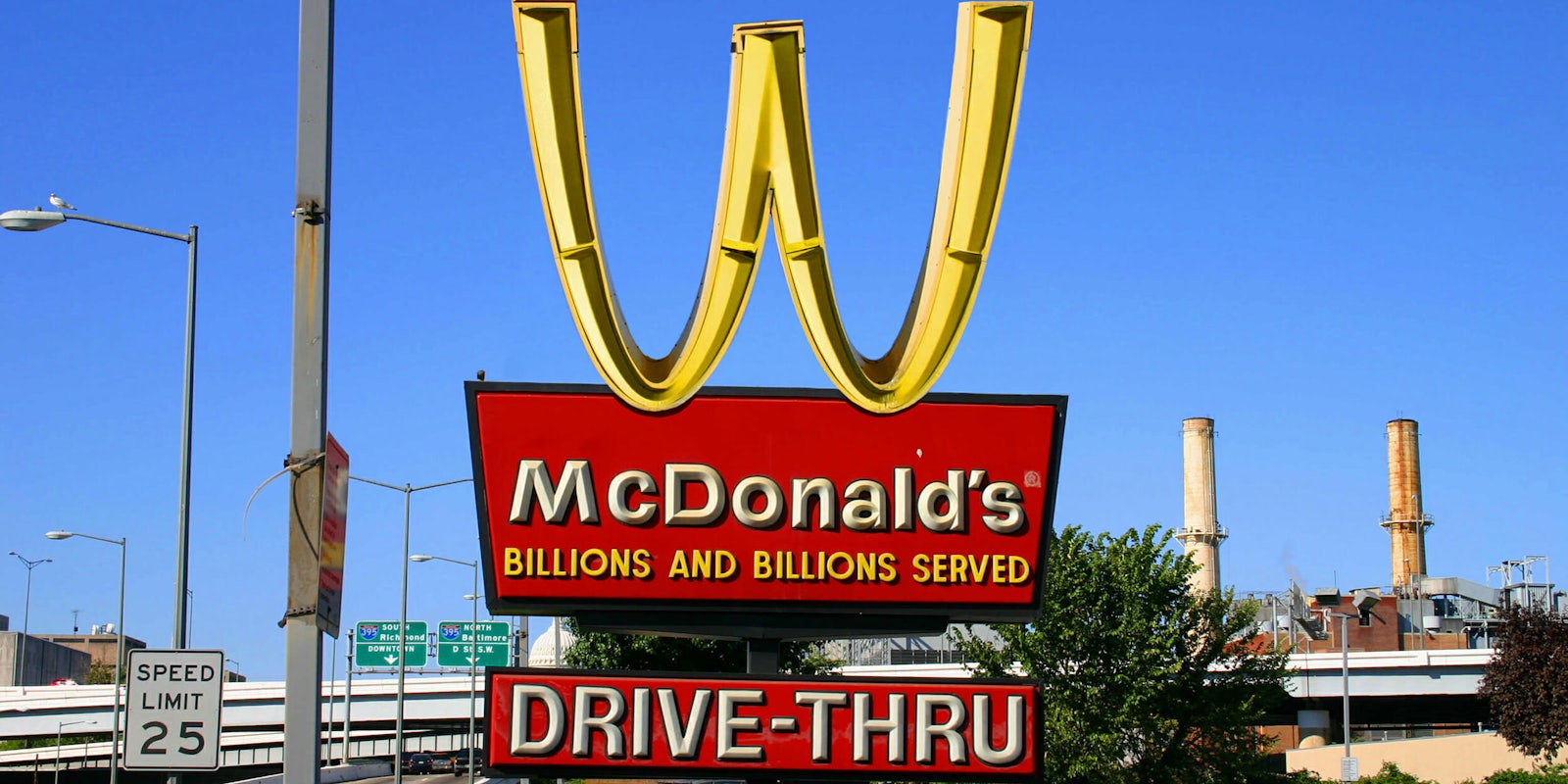To celebrate International Women’s Day, McDonald’s turned its coveted golden arches upside down to form a “W.” The internet was less than thrilled, immediately responding with criticism, and with good reason.
https://twitter.com/truebe/status/971450954053697536
Only a few months ago, former McDonald’s CEO Ed Rensi wrote an extensive argument against raising the minimum wage for employees of the fast-food giant across the U.S. Currently, about three-quarters of McDonald’s employees are women or people of color. His argument pretty much pits restaurants and retailers with low-profit margins against legislators fighting for a minimum wage increase for their lowest paid constituents.
“California’s minimum wage rose to among the highest in the nation at $11 an hour, with some localities going even higher,” Rensi wrote. “The negative impacts of these minimum wage hikes will be greatest in economically disadvantaged areas, where small businesses more often lack the profit margins necessary to cover the associated labor cost increases, and jobseekers lack the skills commensurate with the new wage floor. In other words, minimum wage increases reduce jobs where they’re needed most.”
Except, McDonald’s is far from one of these businesses operating on a low-profit margin. The company earned 5.55 billion in profits last year; it has a profit margin of 20 percent. Comparatively, the average profit margin of big companies in the S&P 500 index is only 8.7 percent, according to S&P Capital IQ. Why, then, is McDonald’s not interested in providing a livable wage for its mostly minority- and women-comprised workforce?
Back in 2015, the fast-food chain raised its minimum wage to $9.90 from $9.01 and average wages were expected to climb above $10 an hour in 2016. The reason cited for the wage hike was to mostly boost employee morale after years of high turnover rates and low sales. Though the wage increase of less than a dollar didn’t necessarily make things any easier for employees, many viewed it as a step in the right direction. However, the wage increase only affected about 11 percent of the company’s workers—because most of its franchises are privately owned and set their own wage standards. So, it comes as no surprise that many McDonald’s workers still find themselves grouped with most fast-food workers who barely earn enough to survive. According to Social Security statistics, the 2017 average annual wage for a fast-food employee was a mere $15,500, compared to the national average of $47,000—almost three and half times higher than what a fast-food worker makes. Meanwhile, the average fast-food employee made $47,060 worth of profits for their employers in the same year.
Aside from low pay, McDonald’s and many fast-food restaurants are also notoriously known for hiring part-time workers to avoid having to pay for their benefits—a move that drastically reduces the amount of money a worker can earn and cuts off their access to healthcare, paid leave, and other important benefits.
In an interview with the Guardian, a woman employee referred to as Laurentina described the hardships she faced while working with the company and having children.
“They are always checking that you never make 40 hours,” she said. “I typically make [sic] between 25 and 30 hours a week. They often stop you at 38 hours a week. It’s really hard with my kids.”
Along with thousands of other fast-food workers, Laurentina took part in a 2013 protest calling for a $15 minimum wage. A wage that, perhaps, would’ve afforded her the opportunity to be able to better take care of her children and be more independent while working. That demand has yet to be met. And executives, like Rensi, are looking for every reason to justify low, unlivable wages for hundreds of thousands of women employed in the fast-food industry instead of reasons to make these huge, profitable companies do better by women.
There are many things McDonald’s can do to reflect their support of women. It can start by spreading its multibillion-dollar profit margin and paying women more money for their hard work and dedication. It can also allow employees to work the hours needed to be full-time and receive full benefits. How about the multi-billion dollar fast food chain go even one step further and offer paid maternity and paternity leave to help all new American families trying to raise and care for their children? Flipping their logo from an “M” to a “W” looks like nothing but an empty gesture, in the absence of any tangible action.
McDonald’s was not the only company to use this important day for marketing instead of activism. The Outline made a comprehensive list of all of the companies that employed similar tactics. With the front of “celebrating women,” companies tried to sell everything from T-shirts, video games, Barbies, sneakers, and booze; even KFC suddenly remembered to pay tribute to the Colonel’s wife, Claudia.
On International Women’s Day, women need more than marketing ploys and bids for likes on social media. They need real solutions to real-life problems like low wages, expensive childcare, lack of access to healthcare, and allies willing to stand with them to bring these solutions to fruition.


